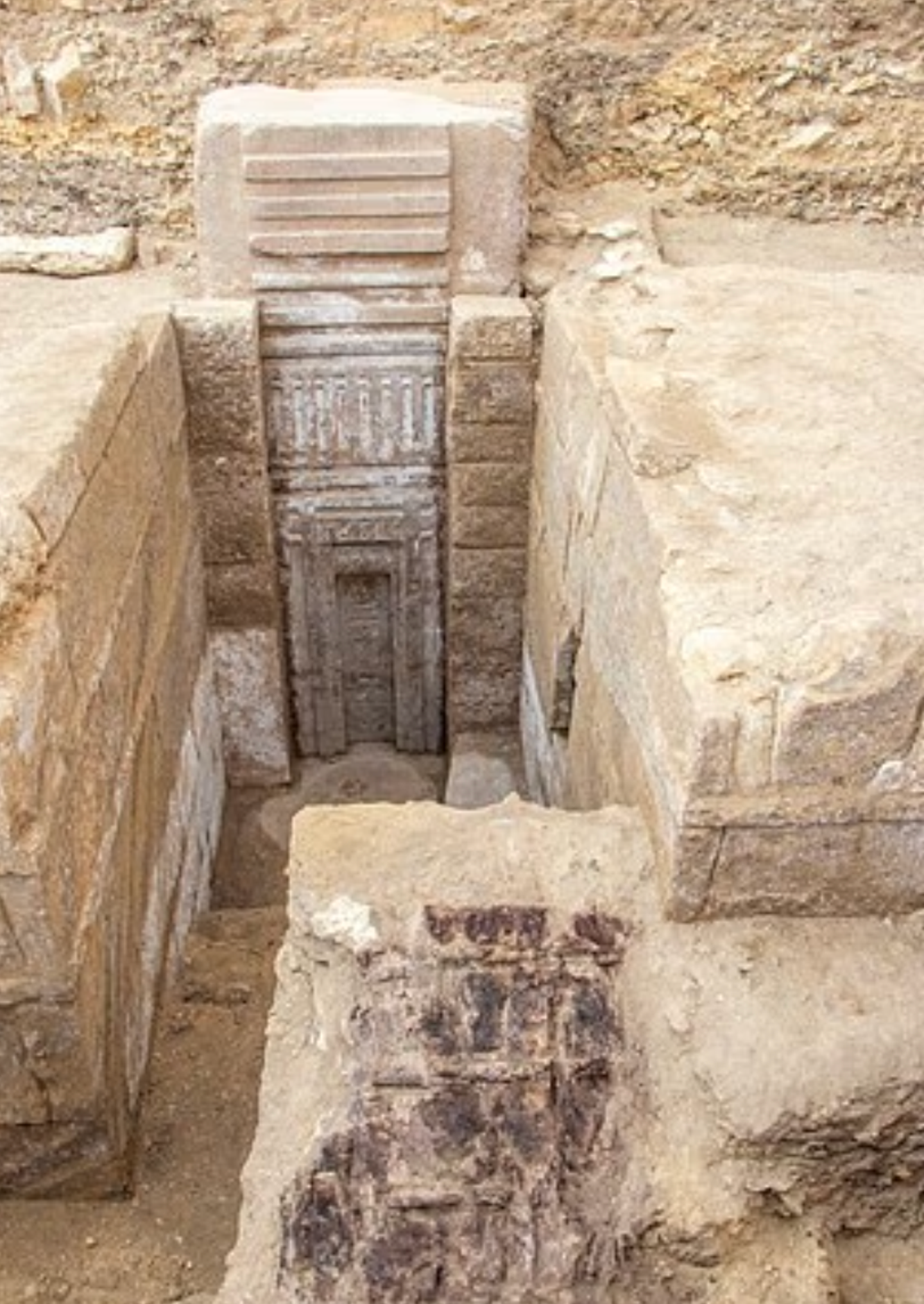Anthropology
Related: About this forumArchaeologists have found 'doorway to the afterlife' in ancient Egypt discovery
Published 20:57 1 Aug 2025 GMT+1
Lucy Devine
Archaeologists have made a groundbreaking discovery in an Egyptian tomb that's over 4,000 years old.
The tomb belongs to Prince Userefre, the son of King Userkaf, who reigned from around 2465 to 2458 BC. It also includes inscriptions such as 'hereditary prince', 'judge', and 'governor', as well as 'minister' and 'chanting priest'.
However, according to Professor Emeritus of Egyptology at the University of Toronto, Ronald Leprohon, this is the first time he has been brought to the attention of Egyptologists, as he told The New Archaeologist: "Before this discovery, we didn't even know he existed."
While investigating the tomb in Cairo, the team discovered a large, pink door inside a catacomb, an underground cemetery consisting of tunnels and chambers.
The door, which was 15 feet high, doesn't open but is believed to be symbolic, as a way of representing 'a portal to the afterlife'.

The tomb belongs to Prince Userefre (Ministry of Tourism and Antiquities)
. . .
Dr Melanie Pitkin, from Cambridge University, previously explained that false doors allowed the 'ka' of the dead to move between the tomb and the afterlife.

The door is believed to be a symbolic one (Egyptian Ministry of Tourism and Antiquities)
More:
https://www.ladbible.com/news/world-news/archaeologists-doorway-afterlife-tomb-ancient-egypt-prince-userefre-627220-20250801
SheltieLover
(76,469 posts)Ty, Judi Lynn for all the delicious brain candy you post.
Judi Lynn
(164,047 posts)
May 4, 2025
Archaeologists in Egypt have uncovered a 4,400-year-old tomb belonging to a prince — and at its heart lies a towering “false” pink granite door, believed to allow the spirit of the deceased to pass in and out of the tomb.
The tomb is attributed to Prince Userefre, son of Pharaoh Userkaf, who ruled Egypt from approximately 2465 to 2458 BCE during the Fifth Dynasty.
A Door for the Afterlife
This recently discovered false door, as revealed by the Egyptian Ministry of Tourism and Antiquities, bears inscriptions identifying the prince as a “crown prince,” as well as a “judge,” “minister,” “governor of two regions,” and a “chanting priest.” Despite his many titles, the prince and his tomb were previously unknown to scholars.
“Before this discovery, we didn’t even know he existed,” said Ronald Leprohon, professor emeritus of Egyptology at the University of Toronto, who was not involved in the excavation.
Standing at about 4.5 meters tall and 1.2 meters wide, the door is carved from pink granite — a material both rare and prestigious. In ancient Egypt, false doors were a common feature in tombs. According to the Metropolitan Museum of Art in New York, they were believed to function as spiritual gateways, allowing the soul of the deceased to travel between the world of the living and the afterlife.
More:
https://www.thearchaeologist.org/blog/mystery-surrounds-giant-false-pink-door-in-ancient-tomb-of-egyptian-prince